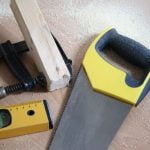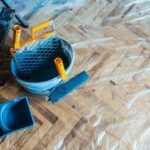When it comes to financing home improvements, homeowners often consider various options to fund their renovation projects. One option that has gained popularity is including home improvements in a mortgage. But what does this mean exactly?
Can home improvements really be included in a mortgage? In this article, we will delve into the concept of including home improvements in a mortgage and discuss its benefits, eligible renovations, financing options, pros and cons, qualification criteria, and provide a step-by-step guide for homeowners considering this route. Additionally, real-life case studies will be shared to highlight successful examples of homeowners who have incorporated home improvements into their mortgage.
Financing home improvements through a mortgage offers homeowners several advantages. Firstly, it allows them to tackle renovation projects without having to deplete their savings or take out expensive personal loans. By including the cost of the renovations in their mortgage loan, homeowners can spread out the payments over the course of the loan term and potentially benefit from lower interest rates compared to other types of loans.
The types of home improvements that can be included in a mortgage are varied and depend on the lender’s policies. Common examples include kitchen or bathroom remodels, room additions or expansions, roof replacements, energy-efficient upgrades such as solar panel installations or window replacements, and even landscaping projects. These renovations not only enhance the functionality and aesthetics of a property but can also increase its overall value.
Understanding the benefits of including home improvements in mortgage
The decision to include home improvements in a mortgage can offer several benefits for homeowners. Financing renovation projects through a mortgage allows homeowners to leverage their existing home loan to fund necessary upgrades or renovations. This option can provide added convenience and flexibility, as it eliminates the need for separate financing for home improvements.
Advantages of including home improvements in mortgage
Consolidation of debt
One significant advantage of including home improvements in a mortgage is the ability to consolidate debt. By bundling the cost of renovations with an existing mortgage, homeowners can potentially reduce their overall interest rates and monthly payments compared to taking out a separate loan for home improvements.
Tax benefits
Including home improvements in a mortgage may result in tax benefits for homeowners. In some cases, the interest paid on a mortgage that includes improvement costs may be tax-deductible, providing potential savings at tax time. However, it is advisable to consult with a tax professional regarding specific eligibility requirements and deductions.
Potential increase in property value
By financing home improvements through a mortgage, homeowners have the opportunity to enhance their property value substantially. Renovation projects such as kitchen remodels or bathroom upgrades can increase the desirability of the property and attract potential buyers if they decide to sell in the future.
Additionally, combining multiple renovation projects into one loan can simplify budgeting and financial planning for homeowners. Rather than juggling multiple loans or lines of credit, homeowners only have one payment to manage, making it easier to track expenses and stay organized.
It’s important to consider these advantages when deciding whether including home improvements in a mortgage is the right choice for your situation. While there are potential benefits, it is also crucial to weigh them against any potential drawbacks or limitations that may arise from this financing option.
Types of home improvements eligible for inclusion in a mortgage
When considering financing home improvements through a mortgage, it is important to understand the types of renovations that are eligible for inclusion. Not all renovation projects can be financed through a mortgage, so homeowners should be aware of the specific types of improvements that lenders typically allow.
- Structural Changes: Lenders are usually willing to finance home improvements that involve structural changes to the property. This includes additions or extensions to the existing structure, such as adding an extra room or expanding the kitchen. These renovations can significantly increase the value and functionality of a home.
- Energy Efficiency Upgrades: Many lenders offer financing options for energy-efficient upgrades, as they can provide long-term savings on utility bills. Examples of energy-efficient improvements that may be eligible include installing solar panels, upgrading insulation, replacing windows with energy-efficient ones, or installing a smart home system.
- Kitchen and Bathroom Remodeling: Renovating kitchens and bathrooms are popular projects among homeowners and are often eligible for mortgage inclusion. Upgrading appliances, countertops, cabinets, fixtures, and flooring in these areas can not only improve the overall aesthetic appeal but also increase the value of the home.
- Roof Replacement: A roof replacement is another common improvement that may be financed through a mortgage. Lenders recognize that a new roof enhances both the safety and longevity of a property, making it an acceptable renovation to include in a mortgage.
It’s important for homeowners to keep in mind that eligibility for including specific types of renovations in a mortgage may vary depending on individual lenders’ policies. Therefore, it is advisable to consult with multiple lenders or seek guidance from professionals who specialize in mortgages and home improvement financing before proceeding with any renovation project.
By knowing which types of renovations are typically eligible for inclusion in a mortgage, homeowners can make informed decisions about their remodeling plans and explore appropriate financing options accordingly.
Financing options for incorporating home improvements
When it comes to financing home improvements, homeowners have several options to consider. Incorporating the cost of renovations into a mortgage can be an attractive choice for many, as it allows for convenient and potentially favorable terms. Here are some popular financing options available for including home improvements in a mortgage:
- Home Equity Loan or Home Equity Line of Credit (HELOC): These options involve borrowing against the equity you have built up in your home. A home equity loan provides a lump sum of money upfront, while a HELOC works more like a credit card where you can draw funds as needed. Both options typically come with fixed interest rates and longer repayment terms compared to other types of loans.
- Federal Housing Administration (FHA) 203(k) Rehabilitation Loan: The FHA offers this loan program specifically for financing home improvements. It combines the purchase or refinancing of a property with the cost of repairs or renovations into one loan. This type of loan is particularly beneficial for buyers who want to purchase a fixer-upper.
- Energy-Efficient Mortgages (EEMs): EEMs are designed to help homeowners finance energy-efficient upgrades to their homes, such as installing solar panels or upgrading insulation systems. These loans allow borrowers to increase their mortgage amount based on the estimated energy savings they will achieve from the upgrades.
- Cash-Out Refinance: With a cash-out refinance, homeowners can refinance their existing mortgage and borrow additional funds to cover the cost of home improvements. This option allows borrowers to take advantage of any accumulated equity and potentially get a lower interest rate on their new mortgage.
It is important for homeowners to carefully consider their financial situation and goals when deciding on which financing option is best for them. Consulting with lenders and exploring different loan programs can help determine which option aligns with specific needs.
Remember that including home improvements in a mortgage may have potential drawbacks, such as increasing the total cost of borrowing and extending the repayment period. It is crucial to weigh the benefits against these potential downsides, ensuring that the overall financial picture makes sense in the long term.
Pros and cons of including home improvements in mortgage
When it comes to financing home improvements, homeowners have a variety of options available to them. One option that many may consider is including the cost of renovations in their mortgage. While this approach can offer several advantages, it is important to weigh the potential drawbacks as well. In this section, we will thoroughly discuss both the pros and cons of including home improvements in a mortgage.
One of the major advantages of financing home improvements through a mortgage is the potential for lower interest rates. Mortgage rates are typically lower than those for personal loans or credit cards, which can save homeowners money on interest payments over time. By bundling renovation costs with their existing mortgage, homeowners may be able to secure a more favorable interest rate and potentially reduce their monthly payments.
Furthermore, including home improvements in a mortgage allows homeowners to spread out the cost over a longer period of time. Instead of immediately paying for renovations upfront, they can extend their repayment timeline along with their mortgage term. This can make large-scale renovations more affordable and manageable for those who do not have sufficient savings or prefer not to deplete their cash reserves.
Despite these benefits, there are also potential drawbacks to consider. One disadvantage of including home improvements in a mortgage is that it increases the overall amount borrowed and potentially extends the repayment period. This means that homeowners will ultimately pay more in interest over time. Additionally, if property values decline or market conditions change, homeowners run the risk of owing more on their mortgage than what their property is worth – commonly known as being “underwater”.
How to qualify for including home improvements in mortgage
When it comes to including home improvements in a mortgage, there are certain criteria and qualifications that homeowners must meet in order to be eligible. Lenders typically have specific requirements that borrowers need to fulfill in order to qualify for financing renovations through a mortgage. This section will outline the key factors that lenders consider when determining eligibility for including home improvements in a mortgage.
- Credit score: One of the most important factors that lenders take into account is the borrower’s credit score. A higher credit score indicates a lower risk for the lender, making it more likely for the homeowner to qualify for financing home improvements through a mortgage. Generally, a credit score of 620 or above is considered good, but some lenders may require even higher scores.
- Equity and loan-to-value ratio: Lenders also look at the amount of equity the homeowner has built up in their property and the loan-to-value (LTV) ratio. Equity is calculated by subtracting the outstanding balance on the mortgage from the current market value of the home.
The LTV ratio is calculated by dividing the loan amount by the appraised value of the property. Typically, lenders prefer borrowers with lower LTV ratios, as it indicates less risk for them. - Debt-to-income ratio: Another factor lenders consider is the borrower’s debt-to-income (DTI) ratio. This ratio compares their monthly debt payments to their gross monthly income. A lower DTI ratio suggests that the homeowner has sufficient income to cover their existing debts as well as any additional costs associated with including home improvements in their mortgage.
- Income verification: In order to qualify for including home improvements in a mortgage, homeowners will need to provide proof of income. This can be done through pay stubs, tax returns, or other documentation that verifies regular income.
It’s important for homeowners to keep in mind that qualifying criteria may vary from lender to lender, and it’s always best to consult with multiple lenders to find out what specific requirements they have for including home improvements in a mortgage. By meeting these qualifications, homeowners can increase their chances of being eligible to include their renovations in their mortgage financing.
| Qualification Criteria | Description |
|---|---|
| Credit score | A higher credit score indicates a lower risk for the lender. |
| Equity and loan-to-value ratio | Lenders prefer borrowers with lower LTV ratios. |
| Debt-to-income ratio | Borrowers with a lower DTI ratio are more likely to qualify. |
| Income verification | Homeowners need to provide proof of regular income. |
Step-by-step guide on including home improvements in mortgage
If you are a homeowner considering financing your home improvements through a mortgage, it is important to understand the step-by-step process involved. This guide will provide you with a detailed roadmap to help you navigate the process effectively.
- Assess your renovation needs: The first step is to assess what home improvements you need and want to make. Consider both cosmetic upgrades and essential repairs. Make a list of all the projects you want to include in your renovation plan. This will help you determine the estimated cost and budget for your renovations.
- Determine the value after improvements: It is crucial to understand how much value the renovations will add to your home. Consult with real estate agents or appraisers who can provide an estimation of the post-renovation value of your property. Knowing this value will help you determine how much financing you may be eligible for.
- Research mortgage programs: Look into different mortgage programs that allow for home improvement financing. Some options include FHA 203(k) loans, Fannie Mae HomeStyle Loans, or conventional renovation mortgages. Each program has its own eligibility criteria, maximum loan amounts, and interest rates, so it is important to research and compare them before making a decision.
- Find a reputable lender: Once you have decided on a mortgage program, it’s time to find a reputable lender who offers that specific program. Research different lenders, compare their interest rates and fees, and read customer reviews to ensure they have a good track record with home improvement mortgages.
- Gather necessary documentation: Like any other mortgage application, including home improvements in your mortgage requires gathering necessary documentation such as proof of income, tax returns, bank statements, and information about the planned renovations. Consult with your lender or loan officer to ensure you have all the required documents ready before applying.
- Submit your application: Once you have gathered all the necessary documents, submit your mortgage application to your chosen lender. Be prepared for the lender to conduct a thorough evaluation of your financial situation, credit history, and renovation plans.
- Appraisal and approval: After reviewing your application, the lender will order an appraisal of your property. The appraiser will assess the current value of your home and determine its projected value after improvements. If everything meets the lender’s criteria and you are approved, they will provide you with a loan commitment letter detailing the terms of the mortgage.
- Funding and closing: Once you receive approval and a loan commitment letter, work with your lender to finalize funding and prepare for closing. This typically involves signing legal documents, paying closing costs, and finalizing any remaining paperwork.
By following this step-by-step guide, homeowners can navigate the process of including home improvements in their mortgage more effectively. It is essential to research all available options, find a reputable lender, gather the necessary documentation, and carefully assess the projected value that renovations will add to your home. Good planning and thoroughness throughout each stage will contribute to a successful financing experience.
| Step | Action |
|---|---|
| 1 | Assess your renovation needs |
| 2 | Determine the value after improvements |
| 3 | Research mortgage programs |
| 4 | Find a reputable lender |
| Gather necessary documentation | |
| 6 | Submit your application |
| 7 | Appraisal and approval |
| Funding and closing |
Case studies
Example 1: The Johnson Family
The Johnson family had been living in their home for several years, and as their family grew, they realized they needed to make some changes to accommodate their growing needs. They wanted to add an additional bedroom and a bigger kitchen to provide more space for their expanding family. However, they were unsure about how they would finance these renovations.
After doing some research, the Johnsons discovered that it was possible to include the cost of their home improvements in their mortgage. They decided to explore this option further and consulted with a mortgage lender who specialized in renovation loans. The lender explained that by including the renovations in their mortgage, the Johnsons would be able to spread out the costs over the life of their loan, making it more manageable for them financially.
With the guidance of their lender, the Johnsons successfully included the cost of their home improvements in their mortgage. They were able to secure a loan that covered both the purchase price of their home and the cost of renovations. This allowed them to complete all the desired changes without having to save up or take out separate loans for the renovations.
Example 2: The Martinez Family
The Martinez family had recently purchased an older home with great potential but in need of significant repairs and updates. They wanted to renovate the kitchen, replace outdated plumbing and electrical systems, and upgrade insulation throughout the house. However, they were concerned about how they could afford these improvements on top of their mortgage payments.
Through online research and speaking with various lenders, the Martinez family learned about renovation loans that allowed them to include home improvements in their mortgage. Excited by this possibility, they gathered quotes from contractors for each renovation project and estimated costs accurately.
After evaluating multiple lenders’ offerings, they found one that suited their needs best – a lender who specifically offered renovation mortgages at competitive interest rates. The application process was straightforward, and the lender evaluated their financial situation, creditworthiness, and the estimated cost of renovations. Once approved for the loan, the Martinez family was able to move forward with their home improvements.
With the funds from their mortgage, the Martinez family completed all of their desired renovations. They now enjoy an updated and modernized home that perfectly suits their needs. By including these improvements in their mortgage, they were able to finance the renovations conveniently without having to take on separate loans or disrupt their existing budget.
Example 3: The Thompsons
When the Thompson family purchased a fixer-upper as their first home, they knew it would require substantial work. They had plans to remodel every room, update plumbing and electrical systems, replace windows, and install energy-efficient features. However, they were uncertain about how they could afford such extensive renovations.
After researching different financing options for home improvements, the Thompsons discovered that including the cost of renovations in their mortgage was a viable solution. They found a lender that allowed them to roll in not only the purchase price but also additional funds for improvements based on post-renovation value.
The Thompsons hired a contractor to create a detailed scope of work for each renovation project along with cost estimates. Armed with this information, they applied for a renovation loan encompassing both purchase funds and improvement costs. Their lender completed an appraisal considering both their property’s current value and its anticipated worth after renovations were complete.
Upon approval and closing on their mortgage loan, the Thompsons wasted no time commencing their ambitious remodeling plans. In just a few months, they transformed their dated house into a stunning dream home.
These real-life examples demonstrate how homeowners have successfully included home improvements in their mortgages. By utilizing renovation loans or specific lenders who offer these financing options, these families were able to afford necessary updates without the stress of saving or securing separate loans for each project. Including home improvements in a mortgage can be an advantageous solution for homeowners looking to make significant changes to their homes.
Conclusion
In conclusion, home improvements can indeed be included in a mortgage, providing homeowners with an excellent opportunity to finance renovation projects. The benefits of this financing option are plentiful. By including home improvements in a mortgage, homeowners can spread the cost of their renovations over the life of their loan and take advantage of historically low interest rates. This allows them to make necessary upgrades and enhancements without straining their immediate financial resources.
However, it is important for homeowners to carefully consider the types of renovations that are eligible for inclusion in a mortgage. Not all improvements will qualify, so it is crucial to consult with lenders or mortgage professionals to understand the specific criteria.
Additionally, homeowners should evaluate the various financing options available to them. Whether through a traditional mortgage or specialized renovation loans such as FHA 203(k), understanding the pros and cons of each option will help homeowners make an informed decision.
While including home improvements in a mortgage offers many advantages, there are potential drawbacks as well. One consideration is that it may increase the overall amount borrowed and extend the repayment period. Homeowners must be prepared for potentially higher monthly payments as a result. It is also essential to meet eligibility requirements and demonstrate financial stability to qualify for this type of financing.
Frequently Asked Questions
Can you add improvements to your mortgage?
It is possible to add improvements to your mortgage through a process called a renovation loan, also known as a rehab loan or an FHA 203(k) loan. This type of loan allows you to finance both the purchase of a home and the cost of renovations or improvements in one mortgage. By adding improvements to your mortgage, you can save yourself from having to take out another loan or use your savings for renovations.
This can be particularly beneficial if you are purchasing a fixer-upper or want to make significant upgrades to your current home. However, it is important to carefully consider the costs and potential return on investment before deciding to add improvements to your mortgage.
Can you add repair costs to your mortgage?
Yes, it is possible to add repair costs to your mortgage under certain circumstances. Similar to adding improvements, this can be done through a renovation loan such as an FHA 203(k) loan or other specialized loans specifically designed for funding repairs and renovations. Adding repair costs to your mortgage can be advantageous in situations where you need additional funds for vital repairs but do not have the cash readily available.
However, it’s important to note that not all repair costs may be eligible for inclusion in your mortgage, and there may be limitations on the total amount that can be financed. Additionally, lenders will typically require an appraisal and assessment of the repairs being financed.
Are renovation loans a good idea?
Whether renovation loans are a good idea depends on individual circumstances and goals. Renovation loans offer numerous benefits for those looking to finance home improvements or buy properties that require substantial updates.
They provide opportunities for individuals who may not have sufficient cash reserves available for renovations or prefer not to deplete their savings entirely. Renovation loans can also potentially increase property value when used wisely, allowing homeowners or buyers to create their dream homes while building equity simultaneously.

I’m thrilled to have you here as a part of the Remodeling Top community. This is where my journey as an architect and remodeling enthusiast intersects with your passion for transforming houses into dream homes.





